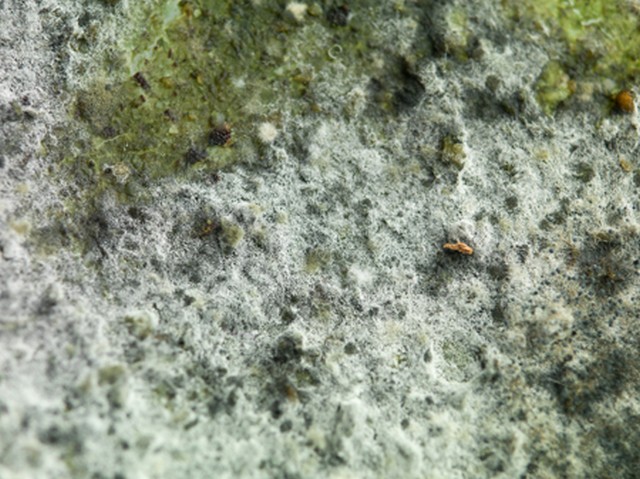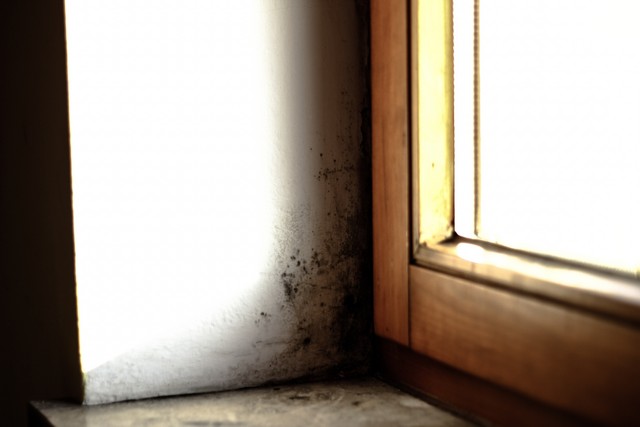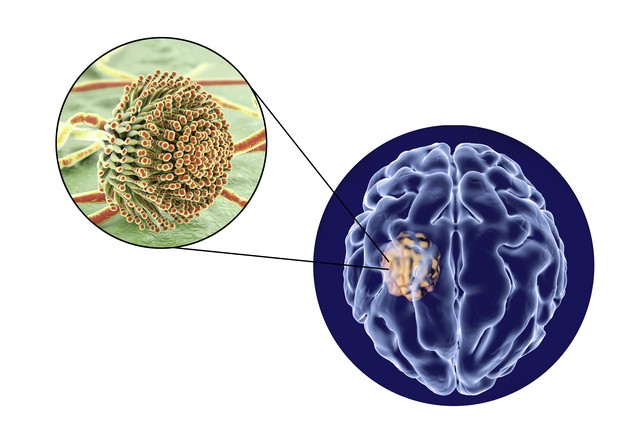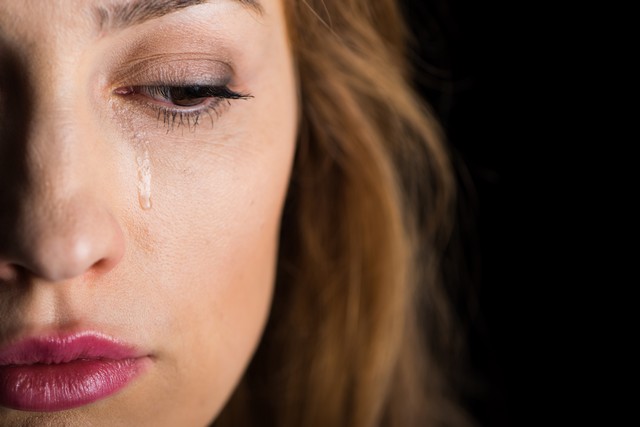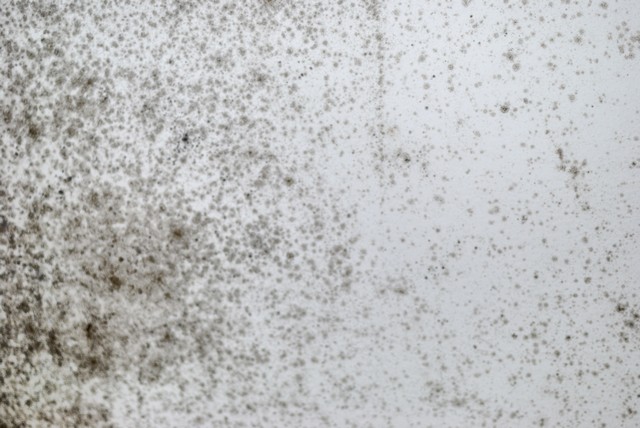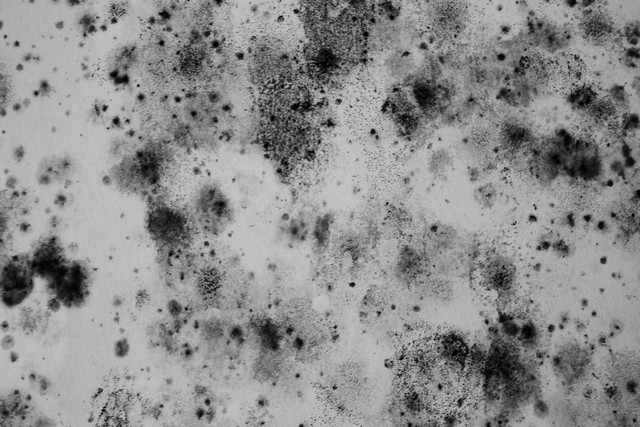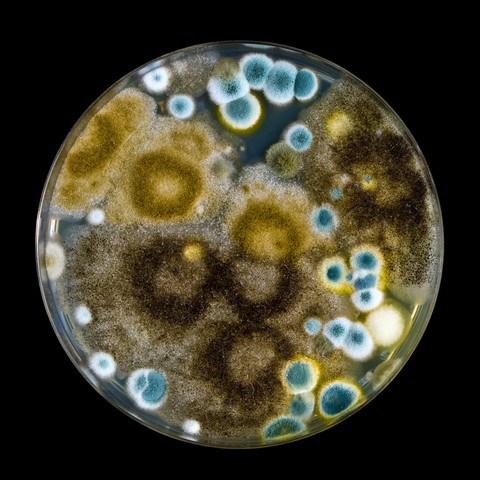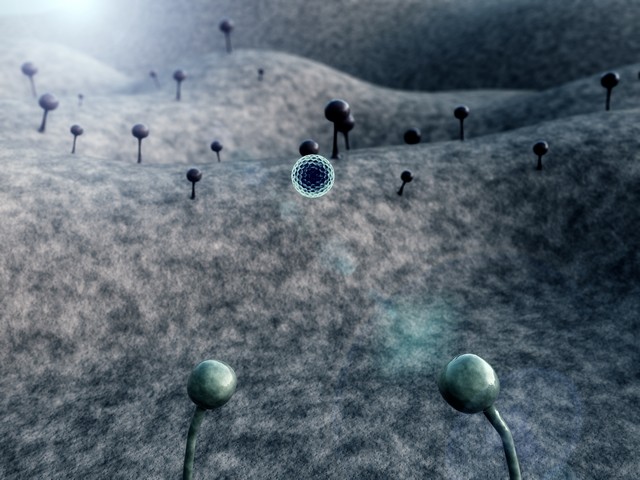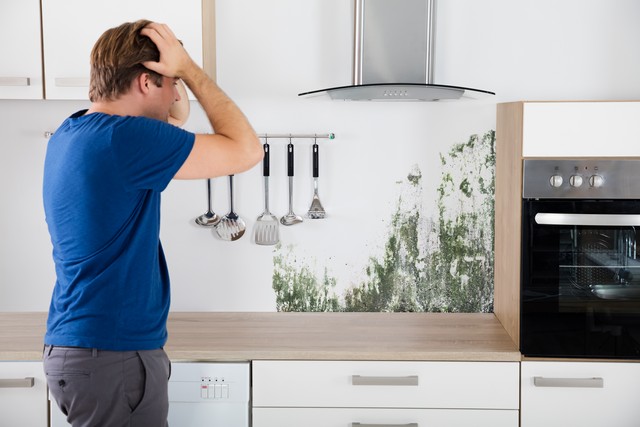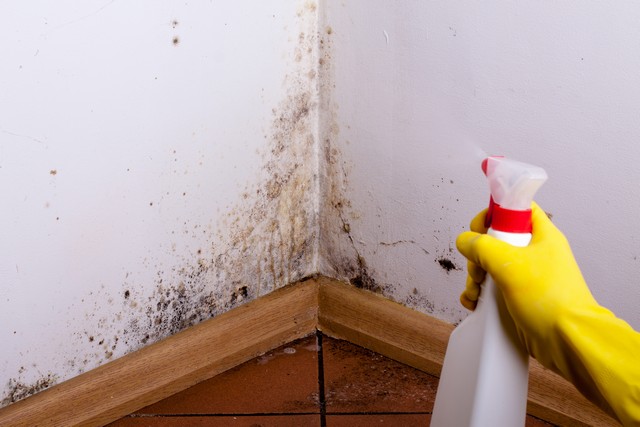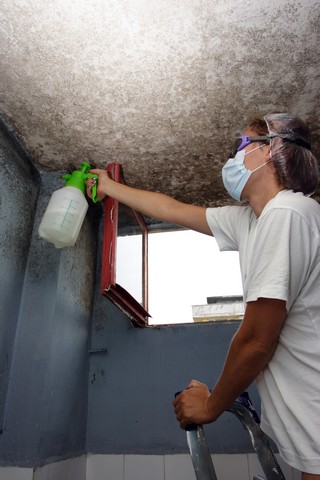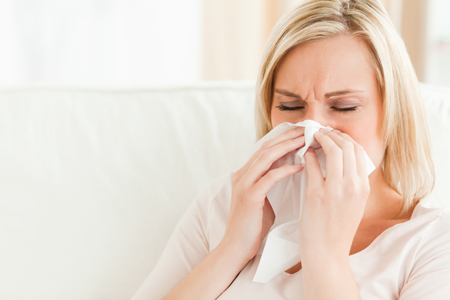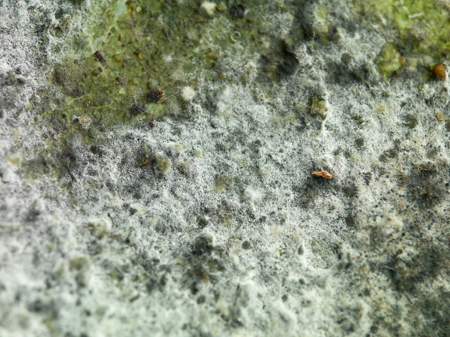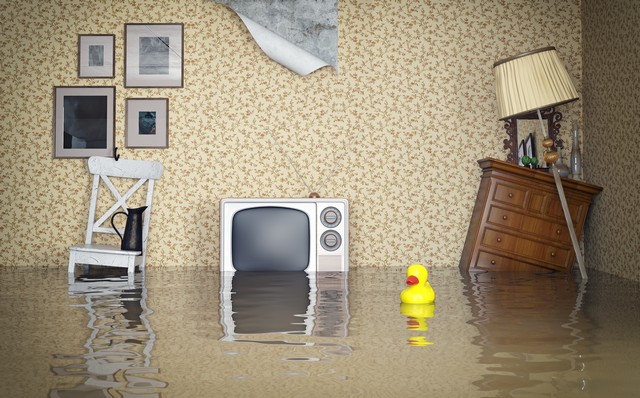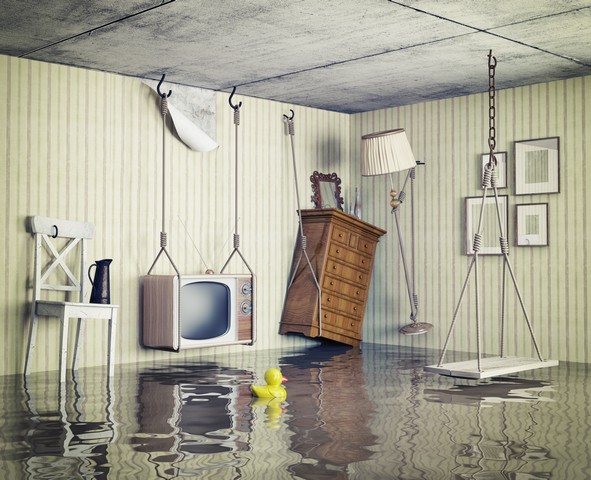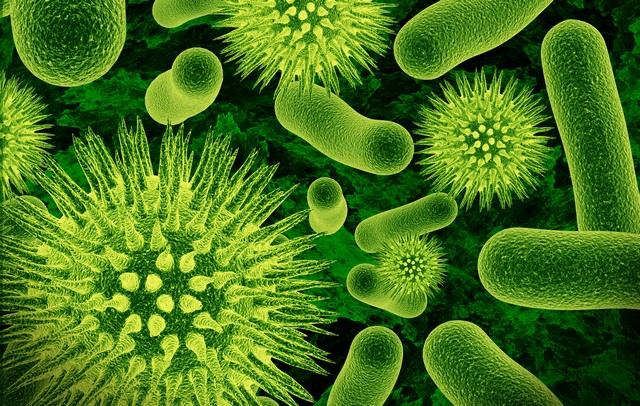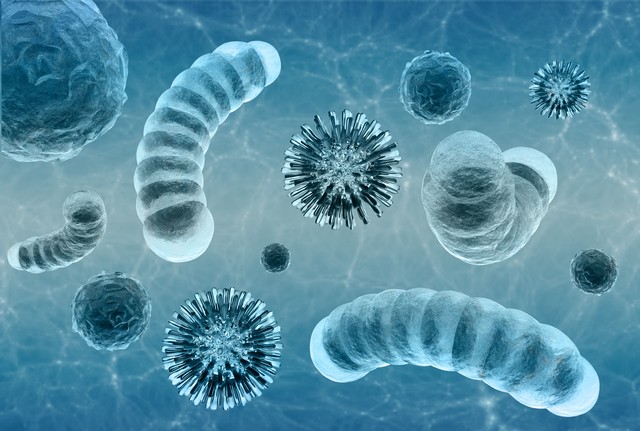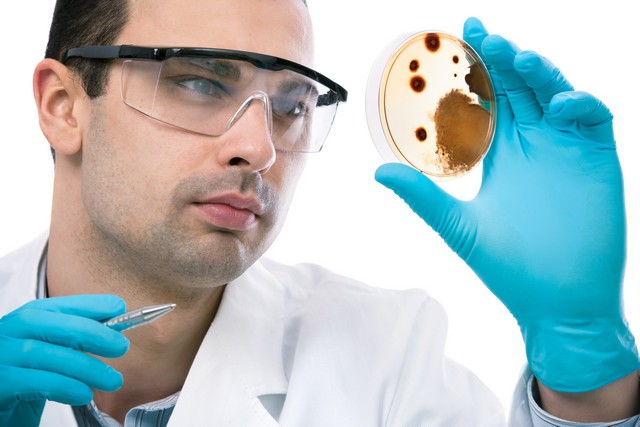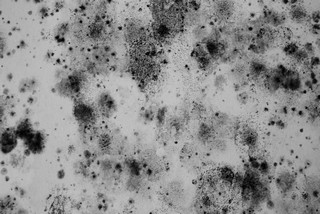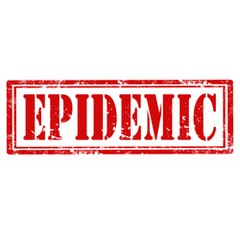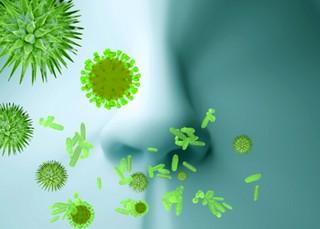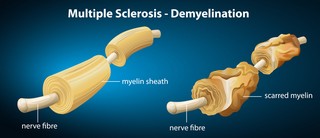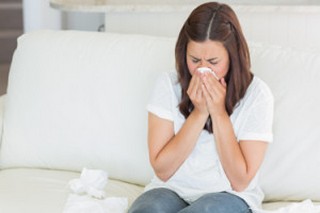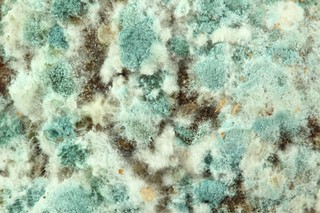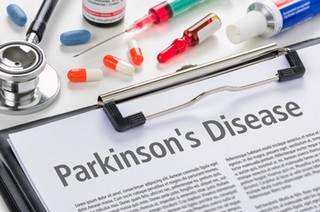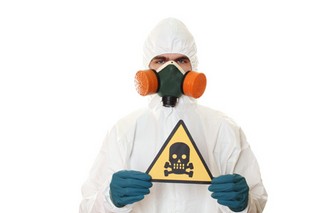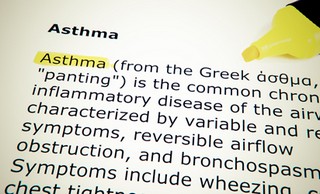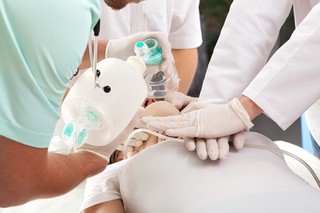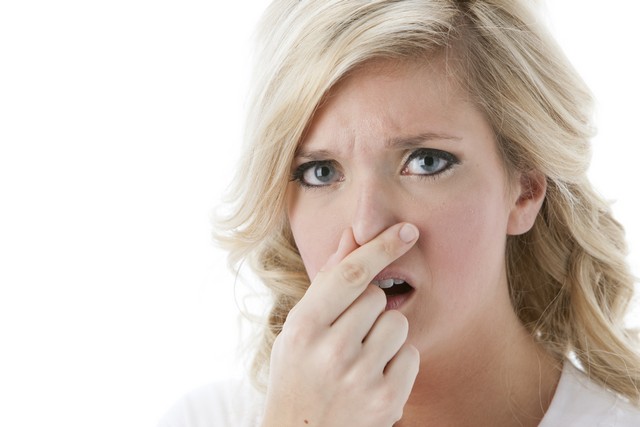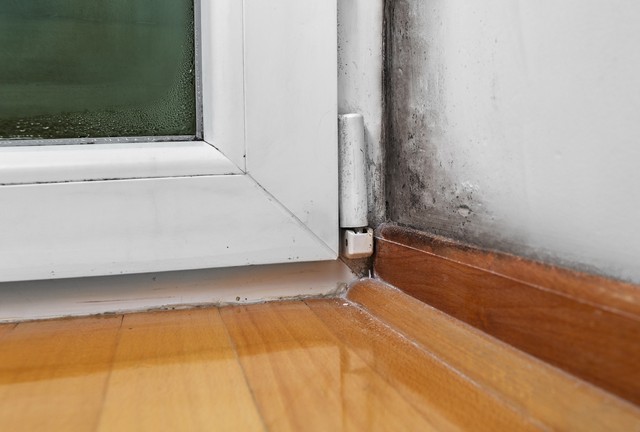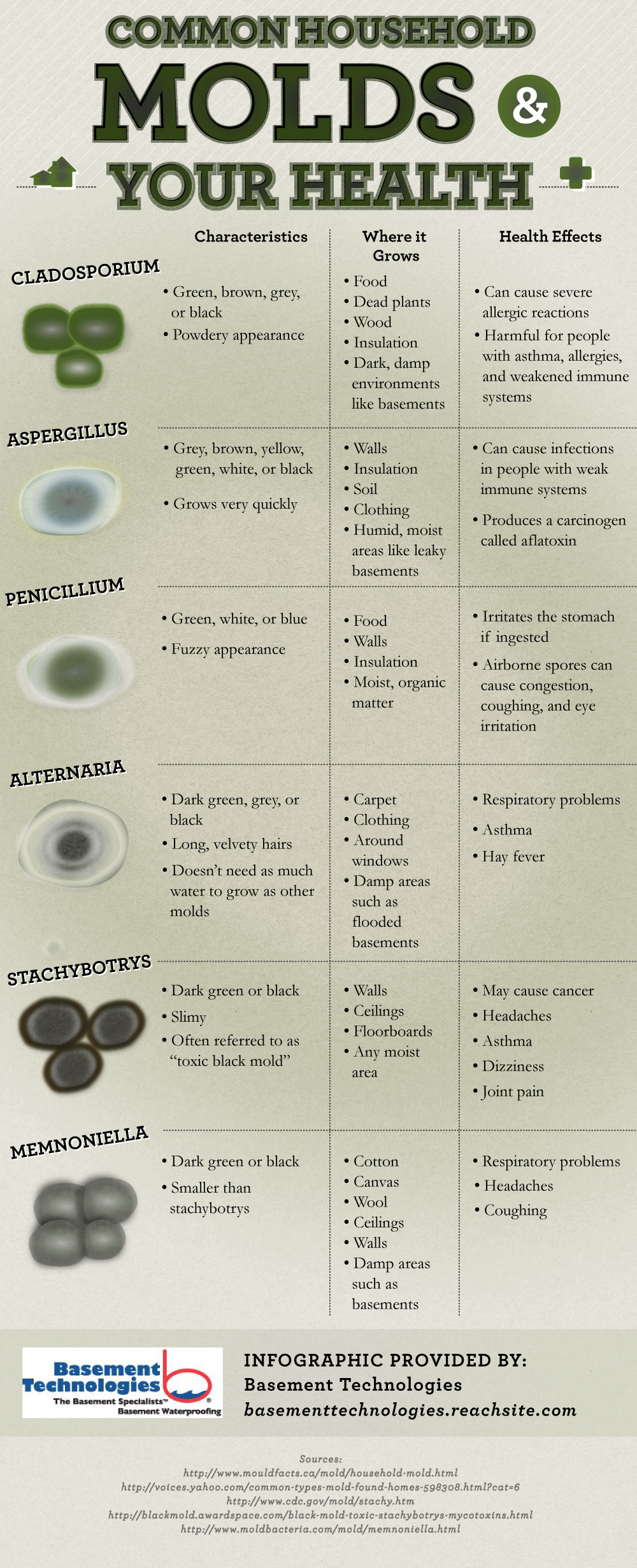
by Eric Brown | Dec 19, 2018 | Uncategorized
Merry Christmas!

Merry Christmas!
Christmas is a time to spend with family and friends. Mold B Gone is grateful to our staff, vendors, and customers. We wish them all the best during the holiday season!
Christmas is the perfect time to celebrate the love of God and family and to create memories that will last forever. Jesus is God’s perfect, indescribable gift. The amazing thing is that not only are we able to receive this gift, but we are able to share it with others on Christmas and every other day of the year. (Joel Osteen)
Christmas waves a magic wand over this world, and behold, everything is softer and more beautiful.(Norman Vincent Peale)
Christmas is the spirit of giving without a thought of getting. It is happiness because we see joy in people. It is forgetting self and finding time for others. It is discarding the meaningless and stressing the true values. (Thomas S. Monson)
He who has not Christmas in his heart will never find it under a tree. (Roy L. Smith)
by Eric Brown | Dec 6, 2018 | Attic Mold, Basement Mold, black mold removal Atlanta, black mold removal Georgia, Crawlspace Mold, Health, Homeowner Tips, Indoor Air Quality, Killing Mold, Mold Facts, Mold Information, Mold Inspection, Mold Remediation, Mold Removal, Mold Removal Alpharetta GA, Mold Removal Atlanta GA
Top 7 Places Mold Hides In Your Home!

Top 7 Places Mold Hides In Your Home!
Mold needs three key ingredients to grow:
- A food source which includes high cellulose content materials such as paper and wood. Other sources of food include drywall, wallpaper, carpet, ceiling tiles, dust, and dirt.
- The ideal temperature of 5 degrees to 38 degrees which provides ideal growing conditions for mold.
- Most importantly, water and moisture is the essential ingredient required by mold to grow which can be provided by leaking pipes, roofs and ceiling, sewer backups, floods, and condensation
The core problem with mold is that it will keep growing until it is removed. This is a concern because, on average, we spend 90% of our time indoors which can cause health issues for many plus structural issues for the property if the mold is not contained and removed.
The purpose of this article is to provide you with information to help you determine if you have a mold problem and explain what you should and should not do if you do find mold.
Where Should I Look For Mold?

Where Should I Look For Mold?
One of the first signs that you have a mold problem will be a “musty” or “mildewy” odor. The next step is to determine where the smell is coming from. The seven areas listed below are some of the most common areas in a home where you will find mold. Other visual clues to look for during your investigation of these areas include: buckled floorboards, discolored carpet, new water stains on the ceiling or wall, and/or actual visual growth such as black specs.
Mold Area 1: Bathrooms and Kitchens
The most common area where you will find mold is under the sinks because of leaks.
Mold Area 2: Appliances
Another potential source of leaks are your refrigerator, dishwasher, and washing machines. Check behind and under the appliances for mold.
Mold Area 3: Roof
If you notice water stains on the ceilings, then your roof could be leaking which will cause mold if the leak is not repaired.
Mold Area 4: Windows
If you have condensation in the home, you will likely find mold on the window sills and around the windows.
Mold Area 5: Basement
If there is high humidity in your home, then check your basement and other areas of the home for mold.
Mold Area 6: Closets
Leaky pipes, high humidity, and other sources of moisture can result in hidden mold in your closets. If there are boxes in the closet, move them and check the walls and floor for mold.
Mold Area 7: Crawl Spaces
Moisture in your crawl space will cause mold to grow.
I Got Mold! What Should I Do?

I Got Mold! What Should I Do?
Two key facts to take into consideration if you think you have mold.
Mold Fact 1: Mold Spreads By Releasing Spores
If you find mold, DO NOT disturb the material. Even if you have an isolated area of mold growth, disturbing the area could potentially worsen the mold problem because the spores will become airborne and seek out other areas in the home to grow. In short, your primary objective is to contain the area where mold is growing and prevent it from spreading.
Mold Fact 2: Some Molds Are Toxic
Another key concern is determining what type of mold is growing. Some molds, like Aspergillus and Stachybotrys, are toxic and can cause many health issues. Molds also produce myctoxins which studies have shown can depress the immune system, leading to many illnesses.
What You Should Not Do If You Got Mold!
We do not recommend removing mold without first consulting a trained professional. If you think you have mold, here are 5 things you SHOULD NOT DO if you have a mold problem:
1. DO NOT Clean Mold With a Normal Vacuum!
Mold spores are extremely small and pass through a normal vacuum filter. Vacuuming, will simply spread the spores! Mold remediation professionals use HEPA vacuums because the filters trap the mold spores preventing cross contamination.
2. DO NOT Remove Mold Contaminated Materials Without Proper Containment!
Mold remediation professionals set up containment barriers to prevent mold from spreading.
3. DO NOT Clean Mold With Bleach!
Bleach is great for cleaning bacteria and viruses, but does not work on mold and may in fact make the situation worse because the simple act of applying bleach creates moisture which mold needs to thrive and grow.
4. DO NOT Remove Mold Contaminated Materials Without Wearing Personal Protective Equipment!
Some molds can be toxic. This is the reason that mold remediation professionals wear safety equipment to prevent mold spores from entering the lungs and touching the skin.
5. DO NOT Ignore or Neglect Your Mold Issue!
In addition to the health issues that mold growth may cause, keep in mind that mold is like a parasite that will keep feeding. The key to stopping mold growth is to address and fix the causes of moisture and then remove the mold so that it will not continue to spread and feed on the home, thereby impacting the structural integrity and long term value of the property.
What You Should Do If You Got Mold!
If you discover mold in your home or business, just remember that some molds can be toxic and that it is best not to disturb the mold which could inadvertently release spores in the air and create even more problems.
Got Mold Questions?

Got Mold Questions?

by Eric Brown | Oct 26, 2018 | 37 Symptoms Associated With Mold Illness, Chronic Inflammatory Response Syndrome (CIRS), Health, Indoor Air Quality, Mold and Depression, Mold Facts, Mold Information
Does Mold Cause Depression?

Does Mold Cause Depression?
Recently, the news reported about an eight year old boy, William Hewlett, that begged his parents to kill him after he started suffering from a brain disorder they fear may have been triggered by mold. According to the article, this young boy developed Pediatric Acute-onset Neuropsychiatric Syndrome (PANS) which is caused when an infection triggers a misdirected immune response resulting in brain inflammation. One of the suspected causes is environmental factors, like mold. William’s mother, Johanne Hewlett, suspects that mold may be the cause because tests showed that her son had high levels of mycotoxins in his system.
One of the symptoms that William displayed was a complete lack of willingness to live, he was extremely depressed. According to Dr. Mary Ackerley’s article, The Brain on Fire: The role of toxic mold in triggering psychiatric symptoms, people feel depressed when exposed to mold because toxins released by mold, mycotoxins, pass directly into the brain
This is the reason that many people exposed to mold suffer from symptoms of depression:
- Difficulty concentrating, remembering details, and making decisions;
- Fatigue and decreased energy;
- Feelings of guilt, worthlessness, and/or helplessness;
- Feelings of hopelessness and/or pessimism;
- Insomnia, early morning wakefulness, or excessive sleeping;
- Irritability, restlessness;
- Loss of interest in activities or hobbies once pleasurable, including sex;
- Loss of pleasure in life;
- Overeating or appetite loss;
- Persistent aches or pains, headaches, cramps, or digestive problems that do not ease even with treatment;
- Persistent sad, anxious, or “empty” feelings;
- Thoughts of suicide or suicide attempts
The purpose of this article is to provide you with a basic understanding of scientific and anecdotal data linking mold with depression.
Similar Symptoms For CIRS and Depression!

Similar Symptoms For CIRS and Depression!
In 2015, Wonder Makers Environmental, created a website, www.moldsensitized.com, dedicated to creating a resource on mold. On their website, they have documented some interviews with mold survivors who suffered from Chronic Inflammatory Response Syndrome (CIRS).
One of the key conclusions that can be gained from these interviews: mold does have an impact on the brain. In the words of the survivors:
“My ears were ringing and it felt as if my head was about to explode.” (Sandy Wolfe: Mold Survivor)
“I had anxiety, brain fog, memory and cognition problems, difficult concentrating and speaking.” (Beth Jarret: Mold Survivor)
“I developed chronic headaches and migraines, fatigue, muscle weakness, dizziness, memory issues, and mood swings.” (Mary DeBoer: Mold Survivor)
“I had blurry vision, insomnia, rage, anxiety, panic attacks, ringing ears, twitching muscles, hallucinations, dizzinesss, and nightmares.” (Amy Nix: Mold Survivor)
“The first symptom that alerted me that something was wrong was the sensation of crawling on my skin along with ice pick/pinprick pain in random places. Shortly after, I noticed that I had the inability to recollect words, slurry speech, memory loss, and an overwhelming fatigue. Other symptoms included vision disturbances, irritability and severe depression.” (Hilesca Hidalgo: Mold Survivor)
“I had burning eyes, headaches, pain in my arms and legs, balance issues, impaired cognitive abilities, and vision issues.” (Kelli Hamilton: Mold Survivor)
All of these survivors suffered from a condition known as Chronic Inflammatory Response Syndrome (CIRS). Listed below are the 37 symptoms associated with CIRS.
- Fatigue
- Weakness
- Aches
- Muscle Cramps
- Unusual Pain
- Ice Pick Pain
- Headache
- Light Sensitivity
- Red Eyes
- Blurred Vision
- Tearing
- Sinus Problems
- Cough
- Shortness of Breath
- Abdominal Pain
- Diarrhea
- Joint Pain
- Morning Stiffness
- Memory Issues
- Focus/Concentration Issues
- Word Recollection Issues
- Decreased Learning of New Knowledge
- Confusion
- Disorientation
- Skin Sensitivity
- Mood Swings
- Appetite Swings
- Sweats (especially night sweats)
- Temperature Regulation or Dysregulation Problems
- Excessive Thirst
- Increased Urination
- Static Shocks
- Numbness
- Tingling
- Vertigo
- Metallic Taste
- Tremors
Comparing the list of CIRS symptoms with the symptoms of depression listed earlier, it is clear that there are many similar symptoms associated with both conditions. This is likely the reason why many people sick from mold are unable to get proper treatment because they are diagnosed with a depressive disorder as opposed to a health condition caused by exposure to mold.
The biggest challenge mold survivors face is the lack of empathy and knowledge from doctors who do not understand mold sickness. Tragically, some survivors are even told that their sickness is all in their head:
“The doctors told us there was nothing wrong with her as she lay screaming in pain, convulsing on the table. The next ER, at a different hospital told us the same thing. The specialist we were sent to said ‘There is nothing wrong with her, I’ve read the reports. I won’t see her until she has a neuro-psych work-up.” (Debra Rogers: Mold Survivor)
Brown University Study on Mold and Depression!

Brown University Study on Mold and Depression!
In 2007, researchers at Brown University released a study showing a link between mold and depression.
The study, led by epidemiologist Edmond Shenassa, analyzed data from 5,882 adults in 2,982 households.
The data was collected by the World Health Organization in 2002 and 2003. Interviewers visited 1000s of homes in eight European cities and asked residents a series of questions to assess symptoms of depression, including symptoms of low appetite, self-esteem, and sleep disturbances. They also tried to visually verify the presence of mold by looking at spots on the wall and ceilings.
What they found was that symptoms of depression were up to 40% higher for residents living in visibly moldy households than for residents that did not have mold in their homes.
Based on this survey, they concluded that there is a definite connection between damp, moldy homes and depression.
The studies author, further concluded that:
“Physical health, and perceptions of control, are linked with an elevated risk for depression, and that makes sense. If you are sick from mold, and feel you can’t get rid of it, it may affect your mental health. Healthy homes promote healthy lives.”
Despite the findings of this study, many in the scientific community consider this an anecdotal study because the researchers did not take actual air samples or swab samples of the suspected visual mold. Because of this, the conclusions of this study have been questioned.
Scientific Data Linking Mold With Depression!

Scientific Data Linking Mold With Depression!
In her article, The Brain on Fire: The role of toxic mold in triggering psychiatric symptoms, Dr. Mary Ackerley explores the scientific research linking mold with brain disorders, including depression.
Unfortunately, one of the common symptoms of depression is suicide. As stated by Ackerley:
“I have patients who will walk into moldy places and their first sign that something is wrong is that they start thinking about suicide. I see that fairly frequently.”
According to Ackerley and other experts she cites, people feel depressed when exposed to mold because toxins released by mold, mycotoxins, pass directly into the brain.
Mold enters the body through the nose and eyes via the olfactory neurons which directly communicate with the brain.
Once the toxins enter the brain, it causes neuroinflammation which has a negative impact on the frontal cortex of the brain, the pleasure center that rules emotion, leading to depression.
Since Ackerley and other scientists believe that mold can cause depression, they have developed treatment protocols that focus on detoxing the patient.
The first step before treatment is to verify if mold is in fact the cause of sickness, which is accomplished through blood tests and the visual contrast sensitivity test developed by Dr. Shoemaker.
The second step is to begin the detox process. Ackerley has successfully used the drug cholestyramine (CSM), to reduce symptoms by up to 75%, provided the patient removes themself from the toxic environment.
She also recommends her patients to adopt a low carb and low sugar diet and the addition of supplements such as fish oil, magnesium, turmeric, probiotics, and vitamin D.
Mold Does Affect Your Brain Causing Depression!

Mold Does Affect Your Brain Causing Depression!
According to Ackerley, the prevalence of mold induced depression could be quite high:
“One fascinating thing I’d like to point out: Dr. Shoemaker has often said that it’s about 25% of the population is susceptible to biotoxin-associated illness. When you add up who’s been diagnosed with a psychiatric illness, it too adds up to about 25% of the population. Is that a coincidence? Perhaps. But it’s a very interesting coincidence to me.”
With respect to the evidence linking the relationship between mold and depression, it is quite clear that mold does affect the brain and this is confirmed by scientific data, further strengthened by the anecdotal data offered by the Brown University study and the mold survivors who have come forward and documented their symptoms.
How prevalent is mold sickness? According to Dr. Scott McMahon, MD, who appeared in the MOLDY documentary:
“Possibly every doctor…is treating mold illness, and they just don’t realize it.”
If you suffer from depression, here are two questions that you need to ask:
- How healthy is the air quality of my home?
- Does my home have mold?
Got Mold Questions?

Got Mold Questions?
If you suspect that your depression is caused by poor indoor air quality and mold, contact Mold B Gone so that we can do a formal mold inspection and indoor air quality tests. Peace of mind is just a phone call away, 470-545-4467!

by Eric Brown | Aug 29, 2018 | 37 Symptoms Associated With Mold Illness, black mold removal Atlanta, black mold removal Georgia, Can Black Mold Poison You?, Can Mold Kill?, Commercial Mold Remediation, Commercial Mold Removal, Crawlspace Mold, Health, How Toxic Is Mold?, Indoor Air Quality, Mold Information, Mold Inspection, Mold Remediation, Mold Removal, Mold Removal Alpharetta GA, Mold Removal Atlanta GA, Stachybotrys Black Mold, Toxic Mold
Is Black Mold Dangerous?

Is Black Mold Dangerous?
Mold B Gone are mold inspection and mold removal experts serving the Atlanta, Georgia area. We have helped 1000s of consumers and business owners with their mold issues using our 8 step mold removal process and eco-friendly chemicals that prevent future mold growth. We are so confident in our mold removal system that we guarantee our work!
One of our goals is to educate consumers about mold through our blog. We are often called by people who are concerned that they may have black mold growing in their homes or businesses. Please don’t panic! We are here to help and are just a phone call away, 470-545-4467!
One of the most common questions we encounter pertains to black mold. The purpose of this article is to explain what black mold is, why it grows, and the potential health consequences of exposure.
What Is Black Mold?

What Is Black Mold?
Stachybotrys molds decay organic matter. The most common species, Stachybotrys chartarum, sometimes referred to as Stachybotrys atra often grows indoors.
Ideal conditions for Stachybotrys growth include moisture, a nutrient/food source, temperature, and time. Ideal humidity for this black mold is a relative humidity of 90% or higher for it to begin the germination growth process. Stachybotrys feeds on materials with a high cellulose content such as hay, straw, wood chips, and building materials such as ceiling tile, drywall, paper vapor barriers, wallpaper, insulation backing, cardboard boxes, and paper files.
Stachybotrys is considered the King of Molds because it will develop into the dominant mold group if the conditions are favorable and will crowd out the other molds that began feeding on the material first.
This happens because unlike other molds like Aspergillus, Penicillium, and Cladosporium which begin growing within one to two days, Stachybotrys takes one to two weeks to begin growing.
Don’t Disturb Black Mold!

Don’t Disturb Black Mold!
When Stachybotrys mold is growing on wet material, the spores do not disperse as easily because the spores are held together by a sticky/slimy coating. However, when the material dries out or is disturbed, the spores will spread through the air.
The main concern of a mold remediation contractor is to prevent the spread of toxic black mold. The most effective method of doing this is through containment, which is the process of creating a poly barrier around the area where the Stachybotrys mold is growing.
This procedure is so important because Stachybotrys spreads by releasing spores. Mold contaminated materials must be removed and disposed of because this mold does not just grow on the surface of the material; it has root-like tendrils called mycelia, meaning it is able to penetrate the surface.
Typically Stachybotry mold grows in clusters at the end of stem-like structures known as hyphae.
Black Mold and Health!

Black Mold and Health!
Stachybotrys produces a mycotoxin (i.e., poison from a fungus) named trichothecenes.
Stachybotrys black mold is a health concern because animal studies have shown that one of the major effects of trichothecenes is immuno-suppression.
In fact, even low level exposure can suppress the immune system resulting in bacterial and viral infections, coughing, skin irritation, and other allergic reactions, and there is some speculation that it may even cause cancer.
Listed below are the top 15 health conditions caused when toxic Stachybotrys black mold is inhaled or ingested:
- Sore/hoarse throat
- Cold and flu symptoms (headaches, slight fever, and muscle aches)
- Nosebleeds
- Tingling or burning of nose, mouth, and perspiration areas (under the arms or between the legs)
- Chronic fatigue
- Dizziness
- Nausea/vomiting
- Memory loss
- Attention deficit/concentration problems
- Personality changes such as irritability or depression
- Neurological disorders such as tremors
- Hair loss
- Coughing with blood
- Bleeding in the lungs (hemosiderosis)
- Damage to internal organs including blood, liver, kidneys, and lungs
Got Black Mold Questions?

Got Black Mold Questions?
If you are concerned that you may have black mold in your home or business that requires removal, call Mold B Gone, 470-545-4467 or send us an e-mail.
Black Mold Summary!
The infographic below, courtesy of the Mold Blogger, provides an excellent summary on black mold and the health symptoms of exposure.

Black Mold Summary!

by Eric Brown | Aug 1, 2018 | Bleach and Mold, Indoor Air Quality, Killing Mold, Mold Information, Mold Remediation, Mold Removal, Mold Removal Alpharetta GA, Mold Removal Atlanta GA
The Myth Of Killing Mold With Bleach!

The Myth Of Killing Mold With Bleach!
The initial instinct when you find mold is usually to reach for a spray bottle and try to kill it with bleach. Our advice, don’t panic and never reach for a bleach bottle, particularly if the mold is on porous materials like drywall. As stated by mold survivor, Christa Upton:
Don’t “kill” or spray mold! Instead, properly remediate it and hire a professional with experience and references that knows what they are doing…. We “killed” mold, sprayed with Lysol, bleached sub-floor and ran fans, replaced carpet but left mold in the sub-floor, walls, etc. Eight months later I was so sick I could not get out of bed….Not one spray has been shown to denature these toxins. Some sprays appear to make toxins worse or more airborne. Humans cannot smell most mold toxins, especially after the mold is “dead.” They are so small that they cannot be seen. They are so tiny that they generally cannot be removed with air purifiers or filters. But they are deadly.
According to Michael Pinto, CEO of Wonder Makers Environmental:
“Killing mold, but leaving the residue in place, is not acceptable. Since many health impacts can be triggered by exposure to both live and dead mold spores, the source and secondary contamination must be removed.” (MOLD INDOORS: Killing it is Not Enough)
One of the problems with the mold is the fact that there is so much bad information on the Internet that recommends that it is safe to try to kill mold. In the case of Christa, this proved to be dangerous to her health.
Unfortunately, because of the lack of regulation in the mold remediation industry, even some contractors believe that killing mold is the answer. Generally speaking, these contractors are poorly trained and really do not understand mold. There is no “quick fix” for mold contamination situations. As a consumer, you need to be cautious about hiring contractors that offer magical solutions that involve just spraying a chemical to kill the mold dead. The purpose of this article is to educate you on mold basics and expand on why killing mold is not the answer.
5 Mold Facts You Need To Be Aware Of!

5 Mold Facts You Need To Be Aware Of!
- Mold thrives when moisture is present. Removing mold without addressing the cause of the problem, ie. identifying the moisture source is not a long term solution. Before any mold removal, the moisture problem must first be found and fixed.
- Exposure to mold spores, both live and dead, and their byproducts like microbial volatile organic compounds (MVOCs), mycotoxins, connecting filaments, etc. can cause illnesses ranging from minor allergic reactions, respiratory problems like asthma and sinusitis, to more serious, life threatening illnesses.
- With respect to health, every individual responds to mold differently. Some people get sick, others don’t. A little bit of mold can make some residents of a property sick, but will not have an impact on others. Research has shown that 25% of the population have a genetic predisposition to mold illness and the condition known as Chronic Inflammatory Response Syndrome (CIRS).
- Mold is a biological agent that will continue to grow as long as the right conditions exist. This is the reason that mold is such a concern because it will continue to thrive and grow unless it is removed and the underlying moisture cause is fixed. In short, ignoring a mold problem will make the situation worse and pose more dangers.
- Contractors trained in mold removal, refer to the process as “remediation” because they have invested in specialized training and equipment and take precautions to prevent the spread of the mold in other parts of the building. Mold remediation specialists will never recommend a “quick fix” because they understand that relying on mold sprays, bleach, biocides, and fungicides are an ineffective “short cut” to mold removal.
The Bleach Myth About Killing Mold!

The Bleach Myth About Killing Mold!
“Perhaps the most misunderstood aspect of bleach when proposed as a cleaner or sanitizing agent is that its effectiveness is greatly reduced in the presence of organic material. To be a successful sanitizer, bleach must be used on clean materials and surfaces. This is why bleach products are used in the laundry after the wash cycle or in a commercial kitchen as a component in the third sink after the dishes have been washed and rinsed. The efficacy of bleach as a sanitizer is also compromised by heat and light. Despite the fact that the chlorine odor may linger for some time after use, bleach loses strength so quickly that it is not considered to have a residual effect that would prevent future bacterial or fungal growth.” (Michael Pinto, Why Restoration Professionals Should Avoid Using Bleach)
One of the benefits of the Internet is it allows anyone to search for a topic of interest and find the information they are looking for.
Unfortunately, with respect to mold removal, the bleach myth is perpetuated on the Internet on countless websites.
Bleach may have some impact on non-porous materials, like bathroom tiles, but bleach is completely ineffective on porous materials:
“If you spray bleach all over your “black toxic mold” you won’t kill every single spore….To kill every single mold spore using bleach, for example, you’d have to use such a high concentration of disinfectant and you’d have to keep it on the surface for so long that more likely you’d damage the structure – and still miss some toxic spores.” (How to Kill Mold – Do We Want to? Is Dead Mold Dangerous?)
Other reasons we do not recommend the use of bleach:
- Bleach does not address the cause of the mold problem!
- Bleach is dangerous!
- Bleach evaporates!
Bleach Does Not Address The Cause Of The Mold Problem!
Experienced mold removal specialists understand that the most effective way to deal with mold is to first find the moisture source and make sure it is fixed.
The next step is to remove the mold contaminated porous materials.
Proper removal of mold contaminated materials like drywall, carpet, soft goods, insulation, and other porous materials is essential because mold has hyphae, which are basically roots that embed themselves in the material.
This is the reason that bleach does not work. Bleach may kill some of the surface mold, but it will not be able to penetrate and kill the roots.
The other reason bleach is a problem is that it is diluted with water. Spraying this is counter-productive because water is an essential ingredient mold needs to grow.
Keep in mind, even if another biocide or fungicide is sprayed on the material, killing the roots, the material will still be contaminated with dead spores. The best course of action to permanently deal with a mold problem on porous materials is to properly dispose of the contaminated material.
Bleach Is Dangerous!
When you are using bleach you should always wear gloves, goggles, and a respirator for three key reasons.
- Bleach is a corrosive that could irritate and damage your skin.
- During the spraying and evaporation process, bleach releases chlorine gas that will impact the eyes and respiratory system.
- One of the by-products of chlorine bleach are dioxins, linked to cancer.
If you intend to use bleach for household cleaning projects, never mix it with other cleaning solutions or detergents that contain ammonia because toxic fumes will be produced.
Bleach Evaporates!
The core ingredient of bleach is chlorine. Over time, chlorine can evaporate and escape through the plastic container. In short, the longer bleach sits, the more ineffective it will become because the chlorine dissipates.
Dead Mold Spores Are Harmful!

Dead Mold Spores Are Harmful
“Even if in theory we could “kill” every spore, the assumption that they are unimportant is highly questionable. “Dead” spores often contain allergens or toxins that are just as harmful to someone breathing them or getting such mold in one’s eye or in a cut, as before….The object is not to “kill” mold, it is – to remove the mold reservoir in the building by physical cleaning or in cases of items that can’t be cleaned, such as drywall, soft goods, carpets, furniture, or insulation, remove the moldy material – to identify the cause and make sure that’s been corrected.” (How to Kill Mold – Do We Want to? Is Dead Mold Dangerous?)
If you have a mold problem, contact Mold B Gone. We are experts at IAQ testing, finding the mold, identifying the moisture source causing the mold, removing the mold, and most importantly, preventing future mold growth using our proprietary mold prevention system chemical line backed by a minimum guarantee of 1 year.
Got Mold Questions?

Got Mold Questions?
Questions? Call 470-545-4467, send us an e-mail, or contact us on FaceBook! We look forward to serving you. 🙂

by Eric Brown | Dec 15, 2017 | black mold removal Atlanta, black mold removal Georgia, Can Mold Kill?, Christmas Tree Mold, Chronic Inflammatory Response Syndrome (CIRS), Health, Homeowner Tips, Mold and Asthma, Mold and Sinusitis, Mold Facts, Questions and Answers
Why Your Christmas Tree Could Be Making You Ill!

Why Your Christmas Tree Could Be Making You Ill!
A newspaper article was published to explain the potential health concerns caused by your Christmas tree: “How CHRISTMAS TREES can cause hay fever hell: Pollen grains, dust and mould can trigger sneezing, coughing and a runny nose”
The article dubbed the illness, Christmas Tree Syndrome, because 1 in 3 (approximately 35 percent) people get sick, suffering from hay fever like symptoms, soon after the Christmas tree is set up in the home.
This article explains what causes Christmas Tree Syndrome and provides recommendations on how you can minimize the potential health issues caused by this indoor air quality issue.
Health Symptoms of Christmas Tree Syndrome!

Health Symptoms of Christmas Tree Syndrome!
Typical signs that your tree is making you ill include the following:
- Asthma attacks, usually triggered by cladosporium mold
- Rhinitis
- Runny nose
- Sinus pain
- Sneezing
- Wheezing
- Coughing
- Cold like symptoms, that subside when away from the home or the room with the tree in it.
Mold Is The Cause Of Christmas Tree Syndrome!

Mold Is The Cause Of Christmas Tree Syndrome!
Prior to the studies documented below, it was thought that tree pollen or even weed killer applied to Christmas trees made people ill.
However, as the studies below conclude, the core cause of Christmas Tree Syndrome is mold, which releases spores and causes allergic reactions:
“Researchers at St. Vincent’s Medical Center in Bridgeport, Connecticut, found that a room containing a fresh Christmas tree for two weeks had mold levels that were five times the normal level. Other studies have shown that levels this high can cause allergic rhinitis and asthma symptoms, says the study’s coauthor, allergist and immunologist Philip Hemmers.” (A fresh Christmas tree for two weeks had mold levels that were five times the normal level)
In another study Dr. John Santilli, compared the level of mold spores in the home before and after the tree was placed in the home. The normal level of mold spores is 800 per cubic meter, but within 14 days of the Christmas tree being in the home, the level of mold spores increased to 5,000 spores per cubic meter.
Another scientific study by allergy specialist, Dr. Lawrence Kurlandsky at Upstate Medical University in New York set out to determine why respiratory illnesses peak around Christmas. The study found 53 different kinds of mold, including, aspergillus, penicillium, cladosporium and alternaria, which can trigger asthma attacks, sneezing and a runny nose. One of the key conclusions made by this study was 70 percent of the molds found triggered allergies and asthma.
Minimizing Mold From Your Christmas Tree!

Minimizing Mold From Your Christmas Tree!
Mold spores are found naturally on Christmas trees, which will flourish once they are in a centrally heated home.
With this in mind, if you can manage Christmas with an artificial tree, that is the best solution. Please note, artificial trees can accumulate a layer of dust and even mold if not stored properly. Be sure to store your artificial tree in a dry area and preferably in plastic tubs to minimize exposure to moisture and dust.
However, if you must use a live Christmas tree, here are some tips to minimize the health impact:
- Thoroughly hose down your tree and let it dry before bringing it into the house. If you bought your tree at a nursery, ask if they have tree washing services.
- Clean all ornaments and lights before putting on the tree; they can harbor dust and molds. Store all decorations in plastic containers that can be easily wiped down since cardboard can potentially attract dust and mold.
- Minimize exposure. If you’re sensitive to molds, keep a live Christmas tree no more than four to seven days.
- Run an air purifier in the same room as the Christmas tree. This may help alleviate symptoms.
- Allergy medication may also help alleviate some symptoms as well.
- Since mold spores may accumulate the longer your tree is in the house, consider getting rid of it first thing on the 26th.
Got Mold Questions?
Happy holidays from your friends at Mold B Gone. If you have questions, we are here to help! If you think you have mold, call us, 678-697-6267 or contact us via e-mail for further assistance.

The team at Mold B Gone wishes you a safe and happy holidays! We look forward to serving you in 2018! 🙂

by Eric Brown | Dec 1, 2017 | Flood, Flood Clean Up, Flood Damage Mitigation, Flood Damage Restoration, Flood Damage Restoration Atlanta, Health, Homeowner Tips, How Toxic Is Mold?, Indoor Air Quality, Killing Mold, Mold and Asthma, Mold and Chronic Fatigue Syndrome, Mold and Depression, Mold and Multiple Sclerosis, Mold and Parkinson's Disease, Mold and Sinusitis, Mold Facts, Mold Information, Property Damage Restoration, Questions and Answers, Toxic Mold, Water Damage Cleanup, Water Damage Prevention, Water Damage Restoration, Water Damage Restoration Atlanta
Why Should I Get My Home Or Business Dried Professionally After Water Damage?

Why Should I Get My Home Or Business Dried Professionally After Water Damage?
One of the services that Mold B Gone specializes in is water damage restoration. We offer this service because the biggest concern that you should have if your home floods or a washing machine hose bursts or one of the pipes burst is mold prevention. Keep in mind, mold will begin growing within 24 to 48 hours, so it is very important that the moisture in your home or business is controlled.
Unfortunately, when people suffer water damage to their properties, they tend to think they can manage the concern themselves using a shop vac and bleach to disinfect.
The temptation to do the job yourself is strong because of the perceived cost savings. However, as this article will explain, there are nine critical reasons you should call a professional to manage the water damage concern in your home or business.
It is not just about saving a few bucks but ensuring that the moisture problems are properly dealt with to avoid future mold concerns.
#1 It May Look Dry, But There Is Still Moisture!
Water always takes the path of least resistance, flowing to the lowest point on your property. Even so, you can’t always know where moisture will hide. Cracks and crevices, cavities in walls and above ceilings, layers of flooring, and all other sorts of places hide water. However, without proper training, without meters to measure the moisture or infra-red cameras, you won’t be able to find all the places water lingers.
This is just another reason to hire Mold B Gone to get your home or business dried professionally because we locate all the hidden water damage – before it becomes a health threat.
#2 Water Weighs Alot!
One gallon of clean water weighs 8.34 pounds.
In a flood damage situation, the hundreds of gallons of water invading your property likely contains contaminants. That makes it even heavier. Once you’ve filled your shop vac with 3-5 gallons of dirty water, you have to get rid of it.
Now imagine lifting and carrying that water-filled bucket weighing 25 to 42 pounds up your basement stairs. Repeatedly!
Don’t risk a back injury just to save a buck, call a professional who has specialized equipment that can remove the water at a much faster speed so that commercial drying equipment and dehumidifiers can be deployed to dry out and remove as much moisture as possible. Again, the major concern of Mold B Gone is to prevent the onset of mold.
#3 Prevent Mold and Bacteria Growth!

Prevent Mold and Bacteria Growth!
The biggest health threat after water damage is mold and bacterial growth.
While your home or business will eventually dry out, moisture left inside the walls or under floors starts to grow mold in as little as 24 hours. And mold can damage your family’s or employee’s health for a very long time.
Mold exposure has been linked to:
- Chronic Fatigue Syndrome
- Asthma
- Sinus Infections
- Parkinson’s Disease
- Multiple Sclerosis
- Depression
So don’t chance it! Prevent mold and bacterial growth in your Atlanta, Georgia region home or business with professional drying.
#4 There Are Contaminants In Flood Water!

There Are Contaminants In Flood Water!
Over the ground flooding from storms carries with it a number of biological contaminants.
Don’t expose yourself to biological contaminants, call a professional that uses proper personal protective equipment.
Keep in mind, even if the water damage did not come from outside, clean water can still contain contaminants if it filtered through building materials.
The only way to determine how many contaminants are in the water is to take a sample and send it to the lab.
#5 We Maximize Your Claim Because We Will Take An Inventory And Photos Of The Contents!

We Maximize Your Claim Because We Will Take An Inventory And Photos Of The Contents!
We separate damaged items into categories of non-salvageable, salvageable, and questionable items. And, if need be, we pack-out and store your precious belongings for you to clean off-site until the water damage restoration is complete. Because we follow the best practices for water damage restoration, we keep costs down and salvage as much as possible.
#6 Mold B Gone Has Years Of Experience!
For most people, flood or water damage is a once-in-a-lifetime event.
Because of that, we know how devastating it is to see your office disrupted or your family’s possessions soaked and scattered.
But we do this work every day. We know how to make a difficult time easier for you. Our professional moisture removal methods work. We can replace do-it-yourself guesswork with our proven experience of years in the business.
#7 Our Goal Is To Save Your Possessions!
Materials and furniture exposed to flood water must be carefully evaluated. If you try to do this on your own, you may discard things that could be saved. Conversely, you may save things that absolutely must be discarded. Part of any professional water damage restoration process is evaluating your possessions. And we explain what’s safe to keep and what you need to discard.
And, for the contaminated items being disposed, we haul it away for you as part of the restoration service!
#8 We Know How To Work With Your Insurance Provider!
We use the latest water damage restoration estimating technology. That means we understand their language, and communicate with them to help resolve your insurance claim fast. If you’re a “do it your selfer,” this might be the best reason to get your property dried professionally.
When water damages homes and businesses, whether it’s from storm damage, over the ground floods, or leaking pipes, the time to act is now!
#9 Mold B Gone Uses Specialized Drying Equipment!
There’s nothing that you can rent from your local hardware store or borrow from your friend down the street that dries out your home or business like the equipment we have.
In a water damage emergency, you need industrial strength fans and dehumidifiers, placed in a very specific pattern for the most efficient drying environment.
Three Key Tips For Choosing A Water Damage Restoration Company!

Three Key Tips For Choosing A Water Damage Restoration Company!
- Look for industry experience and leadership.
- Evaluate their reputation of professionalism and customer service. Ask for referrals!
- Check to make sure you hire a company with certified technicians that have knowledge, training and experience to get your property dry fast.
Hiring a professional is the best thing you can do for your home and your family following a flood!
Have questions? Ready to hire a professional to help with your water damage repair? Contact us today to learn how we can fix up your water damage and get your home or business looking like new again. If you have questions, we’ve provided answers here in our post “15 FAQs About Water Damage Restoration!”.
Peace of mind is just a phone call away!
Remember, Mold B Gone is here to help. We provide water removal and other restoration services! Call us at 470-545-4467.

by Eric Brown | Nov 17, 2017 | 37 Symptoms Associated With Mold Illness, black mold removal Atlanta, black mold removal Georgia, Bleach and Mold, Can Black Mold Poison You?, Can Mold Kill?, Chronic Fatigue Syndrome (CFS), Chronic Inflammatory Response Syndrome (CIRS), Commercial Mold Remediation, Commercial Mold Removal, Crawlspace Mold, Dead Mold Spores, Health, Homeowner Tips, How Toxic Is Mold?, Indoor Air Quality, Killing Mold, Mold and Asthma, Mold and Chronic Fatigue Syndrome, Mold and Depression, Mold and Genes, Mold and Infants, Mold and Multiple Sclerosis, Mold and Parkinson's Disease, Mold and Pregnant Women, Mold and Sinusitis, Mold Facts, Mold Information, Mold Remediation, Mold Removal, Mold Sensitized Customer Testimonial, Mold Sensitized Success Story, Questions and Answers, Stachybotrys Black Mold, Toxic Mold
Got Mold & Health Questions? We Provide Answers To The 15 Most Asked Questions!

Got Mold & Health Questions? We Provide Answers To The 15 Most Asked Questions!
Mold B Gone has been helping residents in the Atlanta metropolitan area and surrounding Georgia states with mold removal since 2009.
During this period we have encountered many questions about mold and the impact it can have on health.
Listed below are the top 15 questions we have encountered with links to articles that provide detailed answers.
#1 Why is Stachybotrys Mold A Health Concern?

Why is Stachybotrys Mold A Health Concern?
You often hear about black mold in the media. Why is it such a big deal? Can black mold actually make you sick? This article explains why!
#2 Why Do Some People Get Sick From Mold And Others Do Not?

Why Do Some People Get Sick From Mold And Others Do Not?
The challenge mold poses is that it impacts everyone differently. This article explains why!
#3 What Is The Link Between Mold and Chronic Fatigue Syndrome?

What Is The Link Between Mold and Chronic Fatigue Syndrome?
Considering the similarity of symptoms between those suffering from ME/CFS and those suffering from CIRS, it is likely that many individuals diagnosed with ME/CFS may have been exposed to mycotoxins produced by mold growth. Learn more!
#4 Is Mold Sickness A Hidden Epidemic?

Is Mold Sickness A Hidden Epidemic?
Since so many health professionals are not aware of the health problems mold causes, many mold advocates believe that it is a hidden epidemic. In short, you could be sick from mold and not even know it. Learn more!
#5 Does Mold Cause Sinus Infections?

Does Mold Cause Sinus Infections?
Chronic sinusitis costs the health care system more than 8 billion dollars each year. The cause is most likely mold, meaning most of the treatments prescribed are not effective. Learn more!
#6 Could Some People Diagnosed With Multiple Sclerosis Actually Be Suffering From Mold Sickness?

Could Some People Diagnosed With Multiple Sclerosis Actually Be Suffering From Mold Sickness?
Dr. Rick Sponaugle of the Florida Detox & Wellness Institute strongly believes that environmental factors, such as mold, could be a cause of MS because mold toxins destroy the myelin sheath on brain neurons, causing the classic white spots seen in MS. Learn more!
#7 How Do I Know If Mold Is Making Me Sick?

How Do I Know If Mold Is Making Me Sick?
Most people do not even know they are sick because of mold and or suffering from Chronic Inflammatory Response Syndrome (CIRS). Learn more!
#8 Are Dead Mold Spores Harmful?

Are Dead Mold Spores Harmful?
There is a lot of bad information on the internet. One of the most prevalent myths is that you can kill mold. This article explains why this is not a good idea and why it can impact your health. Learn more!
#9 Why Does Mold Cause Depression?

Why Does Mold Cause Depression?
Doctor Ackerley believes there is a strong correlation between mold and brain health, particularly depression and suicide. Learn more!
#10 Does Mold Cause Parkinson’s Disease?

Does Mold Cause Parkinson’s Disease?
Recent research suggests that that biologic compounds such as mold have the potential to damage dopamine and cause Parkinson’s symptoms. Learn more!
#11 Why Is Mold A Health Concern?

Why Is Mold A Health Concern?
Mold is nature’s recycler meaning it is designed to break down dead, organic material. Now, imagine, what happens when you have mold growing in your home. It is breaking down the material it is feeding on. Since we spend up to 90 percent of our time indoors this creates a situation ripe for health issues. Learn more!
#12 Does Mold Remediation Improve Health?

Does Mold Remediation Improve Health?
Yes, it does, this article cites a case study.
#13 Does Mold Cause Asthma?

Does Mold Cause Asthma?
Four studies demonstrate a strong link between mold and asthma. Learn more!
#14 Does Mold Affect Pregnant Women and Infants?

Does Mold Affect Pregnant Women and Infants?
This is a difficult topic to research, but there is some evidence that mold could have an impact. Learn more!
#15 Can Mold Poison Me?

Can Mold Poison Me?
There is evidence that toxins and poisons released by growing mold can harm one’s immune system and cause severe sickness. Learn more!
Got Mold and Health Questions?
If you are concerned about mold and think that it may be impacting your health, please do not hesitate to contact us because we specialize in helping mold sensitized individuals. Our team of professionals looks forward to serving you. Peace of mind is just a phone call away, 678-697-6267!

by Eric Brown | Nov 3, 2017 | Basement Mold, black mold removal Atlanta, black mold removal Georgia, Bleach and Mold, Can Mold Kill?, Commercial Mold Remediation, Commercial Mold Removal, Flood, Flood Clean Up, Flood Damage Mitigation, Flood Damage Restoration, Health, Homeowner Tips, Indoor Air Quality, Killing Mold, Mold Facts, Mold Information, Mold Inspection, Mold Remediation, Mold Removal, Property Damage Restoration, Questions and Answers, Toxic Mold
Top 10 Tips To Prevent Basement Mold!

Top 10 Tips To Prevent Basement Mold!
If you’ve started to notice a musty smell in your basement, you may have mold in your home.
Musty odors are sometimes described as earthy and urine like.
Basements have the potential to be dark and damp places.
Add water and moisture to this equation and you have the perfect conditions for mold growth.
The odour you smell is most likely caused by the mold excreting mycotoxins.
Molds will release spores in the air as a defense mechanism to find more moisture and food, contributing to further mold growth.
If you do have mold growth, the key is to contact Mold B Gone to investigate the situation. Mold B Gone has been serving Atlanta, Georgia area consumers and business owners since 2009. Over the years, we have removed mold from many crawl spaces. In addition to crawl space mold removal, the other area of a home that we specialize in is the basement.
This article provides you with ten tips to prevent mold in your basement. These tips are very important if your basement was recently flooded. Implement these tips to avoid future headaches and costly mold removal in the future.
Top 6 Mold Species You Will Find In Your Basement!
The infograpnhic below lists the top 6 mold species that could be growing in your basement.
To determine the species our staff will either gather the spore count in the air using our air quality testing equipment or take swab or tape samples of visible mold. The samples are then sent to an independent lab to verify the species and spore count.

Top 6 Mold Species You Will Find In Your Basement
Ten Tips To Prevent Mold In Your Basement

Top 10 Tips To Prevent Basement Mold!
Fix The Flooding Source!
The first step to preventing future flooding is to determine the cause and fix it. Most basements flood because of backed up drains, leaky pipes, human error (i.e. leaving a tap on), sewer back ups, the lack of a sump pump and/or a malfunctioning sump pump.
Start The Clean Up As Soon As Possible!
The onset of mold will begin within 24 to 48 hours, so it is essential that you begin the clean up immediately.
Hire Experienced Professionals!
If mold is not properly contained and cleaned properly, it can become airborne and contaminate even larger areas of the property.
You need to hire properly trained professionals, like Mold B Gone, who understand how to properly restore a water damaged property and prevent mold growth. Mold growth prevention is important because of the health impact it has and also because mold will impact the structural integrity of the property.
Remove All Wet and Contaminated Materials!
Most insurance companies will not recommend a complete gut for cost savings. Usually they recommend that it is necessary to only remove one foot of drywall above the flood line.
We do not because this could result in long term mold problems because moisture can creep up behind the surface. For this reason, we recommend a complete gut of the basement because the extra short term cost could result in significant long term cost savings.
The last thing you want to happen is for a reconstruction to occur only to find out six months later that you now have a mold problem.
Removal of all the drywall is not our only recommendation. We also suggest the removal of following: all flooring, including the sub-floor; insulation because it absorbs moisture; and finally, if the electrical panel was submerged under water, it should be replaced as well.
Avoid Using Bleach For Clean Up!
As stated by Michael Pinto, CEO of Wonder Makers Environmental:
“Perhaps the most misunderstood aspect of bleach when proposed as a cleaner or sanitizing agent is that its effectiveness is greatly reduced in the presence of organic material. To be a successful sanitizer, bleach must be used on clean materials and surfaces. This is why bleach products are used in the laundry after the wash cycle or in a commercial kitchen as a component in the third sink after the dishes have been washed and rinsed. The efficacy of bleach as a sanitizer is also compromised by heat and light. Despite the fact that the chlorine odor may linger for some time after use, bleach loses strength so quickly that it is not considered to have a residual effect that would prevent future bacterial or fungal growth.”
Do Not Begin Any Rebuild Until the Basement Is Completely Dried Out!
We understand that a flooded basement disrupts your life and you want to resume your normal routine as soon as possible. However, patience is the key.
To avoid any future mold issues that could make you sick, measure the humidity levels and ensure that job was done properly by hiring a third party to perform an indoor air quality test.
In addition, if the flood water was category 3, we recommend that swab tests be performed to ensure that the cleaning process was done effectively.
Only after it is verified that the basement is completely dry and sanitized and clearance testing verifies that the indoor air quality is healthy should the basement rebuild begin.
Properly Insulate Your Basement!
According to Mike Holmes, a respected contractor, insulation is one of the most important factors in preventing basement mold:
“When air, which is full of moisture, leaks into that insulation, it will inevitably lead to mould. Here’s why: Your basement, like every room in your home, has its own natural air convection. The air nearest the ceiling is warmer, and the air nearer the floor is cooler. The cold air at the bottom pushes the warm air up. As it rises, it comes into contact with the cooler exterior wall and releases the moisture it’s holding. It condensates. That air and moisture — if it’s able to get into the batt insulation through a gap in the seal — will wick into the insulation. Over time, it will soak that batt to the point that water can drip down the walls and pool on to the floor….You need a thermal break to stop hot from meeting cold….So, use closed cell spray foam insulation or rigid foam insulation, which will provide a thermal break and not trap any moisture. If you’re using foam insulation boards, make sure you Tuck Tape every seam, and spray-foam all corners and joints to create a 100% seal and a perfect thermal break. That way, you’ll know that anything you do inside your finished basement won’t have to be torn out in a few years because of mould.”
Cross-Ventilate!
If possible, open the windows on all sides of your basement in the evenings when the air is cooler to create a cross-ventilation air flow which will prevent excessive moisture and also ensure that a steady stream of fresh air is circulating throughout the basement.
Ensure Water Drains Away From Your Home’s Foundation!
One of the most effective ways to prevent water intrusion is to ensure that water is not sloping towards the foundation of your home but away from it. This is particularly important if your basement walls are porous and can trap moisture, which can lead to mold. To avoid this, ensure that the ground slopes away from the foundation walls of the home and your downspouts extend at least 6 feet away from the property.
Invest In A Dehumidifier!
To prevent excess moisture in your home, use a dehumidifier and consider waterproofing your basement by sealing cracks in the floor and walls with hydraulic cement and a concrete waterproofing sealer where the floor meets the walls.
Got Basement Mold Questions?

Got Basement Mold Questions?
Call 678-697-6267, or contact us via e-mail.
We specialize in mold detection and mold removal and have helped 1000s of customers because we understand why mold grows and follow an 8 step procedure to ensure that the cause of the mold problem is fixed before we remove the mold.Our ultimate goal is to ensure that mold does not grow back, which we back with our guarantee on our services. We look forward to serving you! 🙂

by Eric Brown | Oct 20, 2017 | 37 Symptoms Associated With Mold Illness, Can Black Mold Poison You?, Can Mold Kill?, Chronic Fatigue Syndrome (CFS), Chronic Inflammatory Response Syndrome (CIRS), Commercial Mold Remediation, Commercial Mold Removal, Health, Homeowner Tips, How Toxic Is Mold?, Indoor Air Quality, Killing Mold, Mold and Asthma, Mold and Chronic Fatigue Syndrome, Mold and Depression, Mold and Genes, Mold and Multiple Sclerosis, Mold and Parkinson's Disease, Mold and Pregnant Women, Mold and Sids, Mold and Sinusitis, Mold Facts, Mold Information, Mold Inspection, Mold Remediation, Mold Removal, Mold Sensitized Customer Testimonial, Property Damage Restoration, Questions and Answers, Stachybotrys Black Mold
What Impact Do Genes Have On Mold Illness?

What Impact Do Genes Have On Mold Illness?
Mold B Gone specializes in helping mold sensitized individuals.
One of the questions we are often asked is why do some people get sick from mold and other’s do not?
One of the biggest challenges faced by people sick from mold is the fact that doctors, friends, and other family members dismiss their symptoms simply because they do not get sick when exposed to mold.
Many victims of mold sickness are labelled as hypochondriacs and are accused of not being sick at all.
This is tragic because many people that get sick have no control over their sickness because their bodies have a genetic pre-disposition to mold illness.
The other major problem with mold illness is the fact that there are so many symptoms, 37, associated with it, meaning it is difficult for physicians to pinpoint the cause.
This article explains how your genes impact mold illness and what you can do if you suspect that you suffer from Chronic Inflammatory Response Syndrome (CIRS).
Legal Challenges Faced By Mold Sensitized Individuals

Legal Challenges Faced By Mold Sensitized Individuals
Sickness from mold has been around for decades.
Victims of mold have tried to plea their cases in the courts seeking compensation for the health damages caused by poorly maintained homes and buildings that had water damage and mold.
Unfortunately, many of the plaintiffs lost their battle because the courts did not believe that mold actually makes people sick.
Despite this, data from thousands of contractors working with occupants of water-damaged buildings documented the health challenges that many mold sensitized individuals faced.
According to Erik Johnson, a mold expert and survivor, it was not until the 1990s, that the World Health Organization, acknowledged that “Sick Building Syndrome” could be caused by toxic mold.
Moving forward, finally, it seems that there is greater recognition that mold is in fact the cause of sickness for many. In 2015, the MOLDY documentary featured health professionals and people who have suffered mental and physical health issues after living in moldy homes. This was a ground breaking documentary because it brought the issue of mold and sickness to a much broader audience, thereby creating significant awareness of this issue.
In a presentation at the PLR Expo in Toronto, Canada, in 2015, CEO of Wonder Makers Environmental, Michael Pinto presented “12 Future Trends In The Restoration Industry“.
One of the most notable trends he cites is a “A Tighter Connection Between Medicine and Environment“.
Pinto cites new diagnosing techniques to identify the illness, Chronic Inflammatory Response Syndrome (CIRS) (detailed below), which legitimizes the tie between Water Damaged Buildings (WDB) and sickness. Research has identified a genetic component to this condition (explained below), a screening test (VCS), and most importantly, a treatment regimen.
Other trends Pinto believes demonstrate the important ties between medicine and the environment include the Environmental Relative Moldiness Index (ERMI) which is a scientific test that analyzes dust samples for 36 mold species. This test provides base information to identify CIRS because 26 of the mold species are considered to be water damage indicators.
This test is important because one sample can be analyzed to identify the extent of water damage in the building that could make someone susceptible to CIRS sick. Importantly, this test will provide an ERMI score, ie. a HERTSMI-2 score that can be given to physicians and will help them assess whether a building will make their patient sick.
Because of the growing medical awareness and the fact that there are now medical tests and drugs to diagnose and treat mold illness, Pinto believes that one of the other consequences of this acknowledgement will be a “More Active Justice System” where plaintiffs will now be able to get compensation because they now have science to back up their claims.
25% Of People Have A Genetic Predisposition to Mold Illness

25% Of People Have A Genetic Predisposition to Mold Illness
The most interesting aspect of the research on the effect that Sick Building Syndrome has on patients pertains to genetics. One of the biggest problems with mold sickness is that it impacts everyone differently. Some may experience minor allergies, and other health conditions like asthma and chronic sinusitis, while other mold sensitized patients may suffer severe illnesses.
One physician documented the health symptoms of 227 patients that lived in water damaged buildings during a three year period. What this doctor found was that 98% of his patients had one of the gene types where their immune systems were not able to effectively deal with contaminants from water damaged buildings.
As stated by Pinto:
“In layman’s terms, two different genes have been isolated, which keep some people’s immune systems from functioning properly when they have been exposed to contaminants from water-damaged buildings. Instead of properly identifying and eliminating the foreign invader, those body defense mechanisms increase the problem. When viewed with a basic understanding of genetic distributions, this research made it clear that up to a quarter of the population (25%) is at increased risk from exposure to water-damaged buildings.“
This research is very significant because it demonstrates that up to 25% of the population has a genetic pre-disposition that makes them more susceptible to mold illness and the condition known as Chronic Inflammatory Response Syndrome (CIRS).
Because of this research, the scientific community and legal system is now taking much greater notice because diagnostic tests, lab tests and treatment tools are being developed to help these patients.
37 Health Conditions Associated With CIRS!

37 Health Conditions Associated With CIRS!
Listed below are the 37 symptoms associated with CIRS.
- Fatigue
- Weakness
- Aches
- Muscle Cramps
- Unusual Pain
- Ice Pick Pain
- Headache
- Light Sensitivity
- Red Eyes
- Blurred Vision
- Tearing
- Sinus Problems
- Cough
- Shortness of Breath
- Abdominal Pain
- Diarrhea
- Joint Pain
- Morning Stiffness
- Memory Issues
- Focus/Concentration Issues
- Word Recollection Issues
- Decreased Learning of New Knowledge
- Confusion
- Disorientation
- Skin Sensitivity
- Mood Swings
- Appetite Swings
- Sweats (especially night sweats)
- Temperature Regulation or Dysregulation Problems
- Excessive Thirst
- Increased Urination
- Static Shocks
- Numbness
- Tingling
- Vertigo
- Metallic Taste
- Tremors
According to Dr. Ritchie Shoemaker, CIRS is:
“an accute and chronic, systemic inflammatory response syndrome acquired following exposure to the interior environment of a water-damaged building with resident toxigenic organisms, including, but not limited to fungi, bacteria, actinomycetes and mycobacteria as well as inflammagens such as endotoxins, beta glucans, hemolysins, proteinases, mannans, c-type lectins and possibly spirocyclic drimanes, plus volatile ogranic compounds.“
For 75% of the population, when exposed to biotoxins caused by mold, the individuals immune system responds by binding with the invading poison that allows its cells to filter the biotoxins through the liver, kidneys, and other organs. In contrast, 25% of the population that have the genetic susceptibility to mold illness get sick because their bodies immune system does not bind to the biotoxin, meaning it is not eliminated and therefore continues to circulate, causing the many symptoms, documented below.
The “C” in CIRS refers to the term “Chronic” because individuals that are exposed to poisons from mold are unable to eliminate the toxins from their body, resulting in on-going and escalating sickness, particularly if the person is continually exposed to mold. This is the primary reason that the first priority of medical practitioners treating mold sensitized patients is to begin the detox process which also must coincide with movement away from the building that is constantly exposing the person to the toxins.
The “I” in CIRS refers to the term “Inflammatory” because the constant exposure to the toxins creates a cycle of sickness, meaning the individual’s immune system is constantly trying to fight the toxins, leading to inflammation.
The “R” in CIRS refers to “Response” because the human body is designed to respond to invading toxins. In the case of patients suffering from mold sickness, the immune system is constantly trying to fight the toxins causing a stress on the complete immune system of the individual, which in turn leads to other health conditions.
As stated by Pinto, the “S” in CIRS refers to “Syndrome” because:
“The symptoms are a result of many factors, including external exposures and internal responses. The contaminants from water-damaged buildings should trigger the activation of an immune response, but some people’s genetic structure does not allow the proper recognition of the biotoxin. Since this combination of circumstances inhibits the clearance of the poison from the body, these harmful substances continue to circulate and create continual damage. With such individuals there is no linear dose/response relationship, meaning that even trivial exposures can create severe problems.“
Is CIRS Life Threatening?

Is CIRS Life Threatening?
The major problem that individuals with CIRS face is their bodies immune systems become severely compromised and weakened from the vicious cycle of invading poison, immune response, and inflammation.
The end result is many of their bodies systems are damaged leading to a wide range of health conditions, some life threatening.
For this reason, many mold survivors have reported that they have abandoned the primary residence that initially made them sick; instead, seeking shelter in trailer parks, and very dry areas, with desert like conditions where moisture is limited. These drastic measures were taken by these individuals because their bodies have become so sensitized to mold that even minor exposure triggers severe reactions.
Fortunately, the continued research on mold sickness is creating hope because treatments have developed that help individuals detox and eliminate the poisons, followed by rebuilding the immune system so that it regains strength.
Do You Suspect You Have A Mold Illness?

Do You Suspect You Have A Mold Illness?
The core problem with CIRS is the fact that there are so many symptoms associated with the condition.
Are you constantly seeking medical attention?
Have you been feeling sick for an extended period of time?
If you think you may be sick because of mold, review the mold sensitized interviews to gather more information.
The next step is to verify that you actually have a bio-toxin illness caused by mold, meaning you should get your home tested for mold.
Then seek out an environmental physician who can properly diagnose, determine if you have a genetic pre-disposition to mold illness, and most importantly begin treatment so your body can properly detox.
If you are diagnosed with mold illness, your physician may request that you leave your home for awhile during the detox process.
During this period, we advise that you get all the mold removed from your home, your contents cleaned, and a thorough cleaning of your HVAC system to prevent the spread of mold spores after the remediation is complete.
Got Mold Questions?



